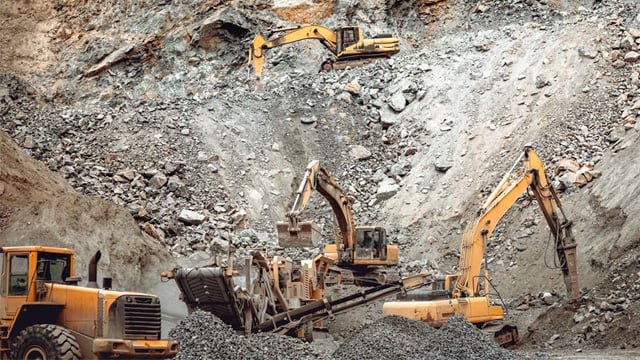
As construction equipment is one of a contractor’s highest cost centers, being cost conscious about your equipment utilization and your owning and operating costs is critical. All contractors calculate the total cost of ownership (TCO) a little bit differently, with various expenses to consider.
This blog covers how certain features and functionalities in a construction equipment management software can help gauge and then optimize your TCO based on research we did by observing the historical cost data from one contractor over a three-year period to back into their average TCO for a fleet worth roughly $15 million. Check out this whitepaper to review what their average costs were in the areas contributing to their TCO or download this infographic for a summary.

1. Know What you Own
Knowing what you have saves you an incredible amount of time and money. It allows you stay on top of the assets you already own, produce the right asset for your job, and better utilize and get the real value out of your assets that you’ve already purchased. Being able to do this successfully with an equipment management software helps you optimize your assets for the real reasons you added them to your fleet in the first place; helps you improve productivity for your team which contributes to a labor cost savings; and helps you save on rental costs.
Related Features: Asset Library, Sites, Geofences, Reservations and Scheduling
2. Monitor How Often your Machines are Used
Knowing the anticipated life of your machines is important so you can maximize their useful life while you own them. When you integrate an equipment management system with telematics into your equipment tracking and management process, you can use the real telematic data from your machines to check your equipment utilization and measure against benchmarks that you set for each.
When machines are underutilized but being hoarded on a jobsite, you can increase their uptime by relocating them to another jobsite where they are needed. A scheduling tool aids in this visibility and efficiency. By monitoring equipment utilization, you can determine whether a project team truly needs another machine onsite or if the resources they have are enough to complete their required scopes.
Related Features: Utilization, Reserve It, Asset Library

3. Properly Maintain your Machines
Repairs and routine maintenance obviously amount to a high percentage of your owning and operating costs. Effective maintenance extends asset lifespan, improves performance and reliability, increases the ROI on owned assets and helps reduce or slow depreciation. When customized for your specific fleet, preventive maintenance can be automated though an equipment maintenance software based on your defined triggers so routine maintenance is always visible and scheduled for your mechanics.
By leveraging a preventative maintenance software for construction for efficient maintenance, you can reduce repairs caused by poor maintenance and/or neglect, lowering unnecessary costs. It also helps avoid unplanned downtime which has direct impacts on your jobs and margins in addition to your ownership costs. The more maintenance your machines need because of inefficient use or excessive wear and tear, or frequent use outside of “normal working conditions” the higher your parts and labor costs will be.
Related Features: Maintenance
4. Schedule the Assets you Need, When you Need Them
Seeing how frequently some machines are requested more than others by your jobsites can help make sure you always have the right machines for the job in your fleet. This helps ensure your machines are getting adequate uptime, are being scheduled for maintenance when appropriate, and aren’t being hoarded or hidden on projects instead of being utilized elsewhere.
Related Features: Reservations, Sites and Geofences, Utilization

5. Monitor your Fuel Consumption
Fuel is costly to begin with based on industry prices and level of use but can be more costly than necessary based on operating behaviors.
Recognizing your heavy equipment fuel consumption and idling behaviors using telematics data from your machines and curbing this practice in the field can help get a handle on operating costs and increase resale value. If you stop burning unnecessary hours on your machines, you’ll naturally also stop spending excessive amounts (we’re talking tens of thousands) in fuel costs.
Using fuel consumption data from your equipment trackers and integrating your fueling processes with a fuel card system that monitors vehicle and construction equipment fuel consumption rates at the pump can also highlight instances of fuel theft which is an unfortunate reality in construction and is an area of fuel cost creep.
Related Features: Fuel, Maintenance
6. Know How Much your Assets are Earning
Knowing how much your assets are earning for you both internally on your jobsites and outside of your organization helps to offset your ownership and operating costs.
Using an equipment management system to aid in effective project planning can help determine what equipment is available for project needs and what owned machines can be utilized to bring income to the Equipment Division vs. paying cash to an outside company for a rental. Further, choosing to leverage an RPO option on an external rental based on knowing what is already reserved in your fleet and what machines may be needed long term helps make smart financial decisions when acquiring a needed asset.
Related Features: Asset Revenue, Finance Tools

7. Inspect your Equipment Before Use for Safe Performance
Equipment inspections help identify when something is amiss with a vehicle or machine and can keep the focus on safe and optimal performance. When an issue is discovered during an inspection, a fix can be identified and resolved quickly, before the issue or condition becomes worse or results in a costly and avoidable safety incident.
Related Features: Safety & Compliance, Inspections, Driver Scorecards
About Austin Conti
As CEO and Co-Founder of Tenna, Austin leverages his international experience in construction operations for civil, building, and energy projects with The Conti Group, which has built successful, reputable businesses that make a positive impact on the world in construction, engineering, renewable energy, real estate, technology, and biotech. His passion for entrepreneurship led him to create a construction technology platform built on over a century’s experience from The Conti Group.


